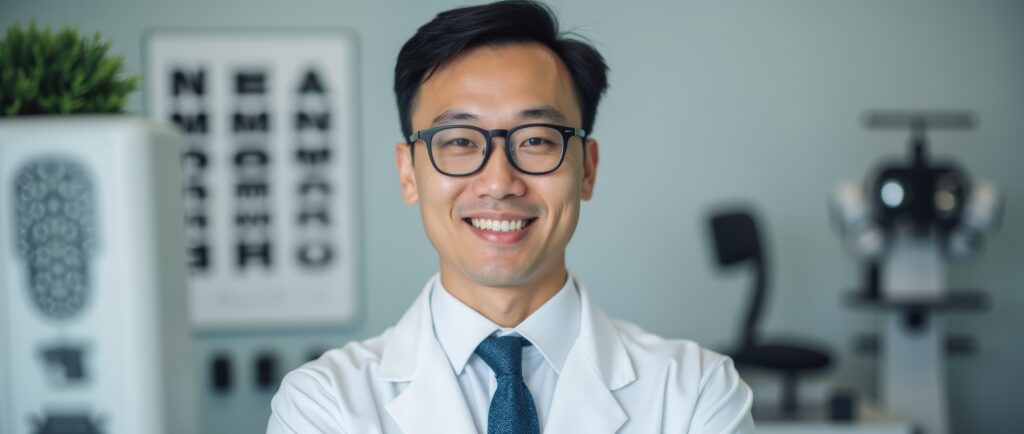The NHS in England is undergoing a major transformation in 2025, reshaping how health services, particularly eye care, are delivered. With rising demand for hospital eye services and a pressing need to reduce waiting times, these reforms mark a pivotal step in ensuring the NHS is fit for the future.
This blog offers an up-to-date overview of the key pillars of the NHS 2025 eye care reforms, explores what they mean for optical practices and professionals today, and provides practical advice for adapting to this new landscape.
What the NHS Eye Care Reforms 2025 Mean
The NHS Eye Care Reforms 2025 are a set of nationally coordinated changes aimed at transforming how eye health services are delivered across England. Aligned with the NHS Long Term Plan, these reforms are designed to move services from overstretched hospital settings to more accessible community optical practices, making care more local, preventative, and efficient. By prioritising primary care and elective care access, the reforms aim to reduce wait times, improve patient outcomes, and support a transition from sickness to prevention. This updated model of care ensures NHS services are fit for the future, using community-based providers to deliver timely, high-quality care.
Key Pillars of the 2025 Eye Care Reforms
Universal Commissioning of Community Eye Services
Established in April 2025, this pillar standardises urgent and emergency eye care across England. Led by NHS England and the College of Optometrists, it shifts care closer to home, easing hospital eye service demand and improving patient access and outcomes across the NHS.
Expanded Role of Optical Practices
Central to the 2025 health plan, this reform empowers optical practices to deliver urgent and elective eye care services previously provided in secondary care. Supported by NHS England, Integrated Care Boards, and Local Optical Committees, it strengthens primary care providers and promotes proactive, integrated care aligned with the NHS mandate.
Integration of Primary and Community Care
Published in January 2019, the integration of primary and community care is an ongoing NHS development and a key pillar of the 2025 eye care reforms. Led by NHS England and Integrated Care Boards under the Department of Health and Social Care’s mandate, it aims to shift care from sickness to prevention, making health and social care more fit for the future.
Increased Use of NHS Optical Vouchers
As part of the 2025 reforms, expanding NHS optical voucher uptake improves access to essential eye care, especially among vulnerable populations. Streamlined eligibility and processes ensure equitable care delivery and support the government’s investment in NHS eye care to reduce health inequalities across England.
Investment in Workforce Development
NHS England’s commitment to enhanced training equips optical professionals with the skills to manage urgent and minor eye conditions. This supports the expanded model of care by building a workforce capable of delivering high-quality eye care services closer to patients and reducing pressure on hospital eye services.
Analogue to Digital Transformation
Critical to the reforms, upgrading optical practices’ systems to the NHS digital infrastructure enables electronic referrals and shared records. This digital integration facilitates coordinated care delivery, improves patient flow through eye care services, and supports the NHS’s broader move from analogue to digital health and social care.

Implications for Optical Practices and Professionals
For Optical Practices:
- Expanded service offerings require investment in clinical equipment and workforce development.
- Close collaboration with NHS bodies and participation in Integrated Care Systems (ICS) is vital.
- Digital readiness is essential to meet NHS data sharing and referral standards.
For Optical Professionals:
- Greater clinical responsibilities necessitate ongoing professional development.
- Mastery of digital systems supports efficient patient management.
- Interdisciplinary collaboration with other primary care providers will increase.
Professional Tips for Practices and Professionals
For Optical Practices:
- Engage with NHS Organisations: Maintain active communication with ICBs and LOCs to stay updated on commissioning priorities and ensure your services align with NHS expectations.
- Modernise IT Infrastructure: Invest in secure, NHS-compliant digital systems capable of electronic referrals and integrated data sharing to improve patient safety and workflow efficiency.
- Prioritise Staff Training: Encourage your team to complete CPD modules focused on urgent eye care and public health. Advanced clinical training is an essential investment.
- Promote NHS Optical Voucher Uptake: Train staff to assist patients in understanding eligibility and application processes to improve access.
- Strengthen Local Networks: Build referral relationships with GPs, pharmacists, and community care providers to establish your practice as a local eye care hub.
For Optical Professionals:
- Pursue CPD in Urgent and Minor Eye Conditions: Develop expertise in managing acute eye problems to meet expanded clinical responsibilities.
- Build Digital Competence: Familiarise yourself with NHS electronic referral systems and shared care records to support seamless patient management.
- Engage in Public Health Initiatives: Participate in preventative care efforts, including school vision screenings and community awareness campaigns.
- Embrace Collaborative Practice: Enhance communication skills to work effectively within integrated care systems alongside other healthcare professionals.
- Stay Informed on NHS Policy: Regularly review NHS guidelines, reform updates, and clinical governance requirements to maintain compliance and optimise service deliver.

Benefits and Challenges for Optical Practices and Professionals
Benefits:
- Greater Clinical Autonomy: Optical professionals can take on a wider clinical role, enhancing job satisfaction.
- Growth Opportunities: Practices can attract new patients, expand services, and access additional NHS funding streams.
- Structured Training Support: Access to enhanced CPD and qualifications supports career progression.
- Stronger Role in Primary Care: Participation in Integrated Care Systems increases the influence and recognition of optical services.
- Improved Patient Engagement: Providing urgent care strengthens patient loyalty and retention.
Challenges:
- Operational Expenses: Upgrading digital systems and investing in staff training impose financial burdens on practices.
- Ongoing Training Demands: Meeting new clinical competencies requires continuous learning and time investment.
- Technical Integration: Achieving full digital compatibility with NHS systems is complex and requires careful management.
- Compliance Requirements: Practices must adhere to rigorous clinical governance, data protection, and auditing standards.
- Managing Increased Demand: Expanded services may increase patient volume and case complexity, straining practice capacity.
Looking Ahead
The 2025 NHS Eye Care Reforms represent a critical opportunity for optical practices and professionals to lead in delivering accessible, preventative eye care. By embracing integration, digital innovation, and expanded clinical roles, the optical sector can meet rising demand, improve patient outcomes, and strengthen its position within the NHS.
Conclusion
These reforms create a pathway for optical practices to become integral to community eye care, thereby reducing hospital pressures and enhancing patient access. Practices that invest in digital infrastructure, workforce development, and collaborative networks will be best placed to thrive in this evolving landscape. Just so you know, the time to act is now. Position your practice and your team to meet the future of NHS eye care.
Partner with Verovian Optical Recruitment Agency.
Partner with us for expert optical recruitment solutions. We connect practices with top professionals, helping you grow, innovate, and deliver exceptional eye care across NHS England in 2025 and beyond.






